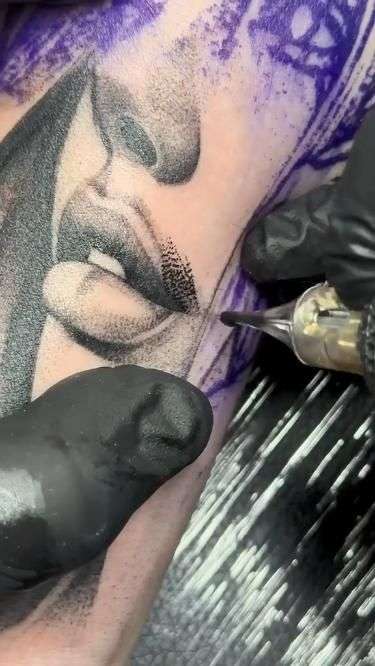Lip Whipshading Tattoo Process: Enhancing Beauty with Precision
In the world of permanent makeup, advancements continue to redefine how we enhance natural beauty. One such innovation gaining popularity is lip whipshading tattooing, a technique designed to give lips a fuller, more defined appearance without the need for daily makeup application. This process involves intricate artistry and a keen understanding of facial anatomy, making it a specialized skill within the broader field of cosmetic tattooing.
Understanding Lip Whipshading
Lip whipshading, often referred to as lip blushing or lip tinting, is a semi-permanent cosmetic procedure that involves depositing pigment into the lips' upper layers. Unlike traditional tattooing that aims for bold, defined lines, whipshading uses a softer, more diffused approach to create a natural-looking flush of color. This technique can enhance lip shape, symmetry, and color definition, offering a subtle yet impactful enhancement to one's facial features.
The Process
Consultation:
Before the procedure begins, a thorough consultation with a trained technician is essential. This discussion covers the client's desired outcomes, medical history, and expectations. Skin tone, lip shape, and existing pigment are also assessed to customize the procedure for optimal results.
Preparation:
Once the consultation is complete and the client's goals are understood, the technician begins preparing the area. This involves cleansing the lips and applying a topical numbing cream to minimize discomfort during the procedure.
Pigment Selection:
Choosing the right pigment is crucial. Technicians consider factors like skin undertone and personal preference to select a shade that complements the client's natural lip color and overall complexion.
Tattooing Process:
Using a specialized hand tool or machine with fine needles, the technician carefully deposits the pigment into the upper layers of the lips. Unlike traditional tattooing, which penetrates deeper into the skin, whipshading aims for a more superficial placement to achieve a softer, more natural appearance.
Layering and Building Color:
The technician builds up layers of pigment gradually, allowing each layer to settle and assesses the color saturation. This layering technique ensures that the final result looks harmonious and blends seamlessly with the client's natural lip tone.
Aftercare:
After the procedure, the technician provides detailed aftercare instructions. This typically includes avoiding excessive moisture, sun exposure, and certain foods to promote proper healing and pigment retention. Lips may appear slightly swollen and intense in color initially, but they will gradually soften and settle into the desired shade over the following weeks.
Benefits and Considerations
Benefits:
Enhanced Natural Appearance: Achieves a subtly enhanced lip color and definition.
Time-Saving: Reduces the need for daily lipstick application.
Longevity: Results can last up to 2-3 years with proper care.
Customization: Tailored to individual preferences and facial features.
Considerations:
Initial Intensity: Lips may appear more intense immediately after the procedure but will fade to a natural hue.
Healing Process: Requires careful aftercare to ensure optimal healing and pigment retention.
Maintenance: Periodic touch-ups may be needed to maintain color vibrancy over time.
Conclusion
Lip whipshading tattooing represents a blend of artistry and technical skill, offering individuals a convenient way to enhance their natural beauty with lasting results. As with any cosmetic procedure, choosing a qualified technician and understanding the process and aftercare requirements are essential for achieving the desired outcome. Whether seeking a subtle enhancement or a more defined look, lip whipshading provides a versatile solution for those looking to accentuate their lips with confidence and ease.






